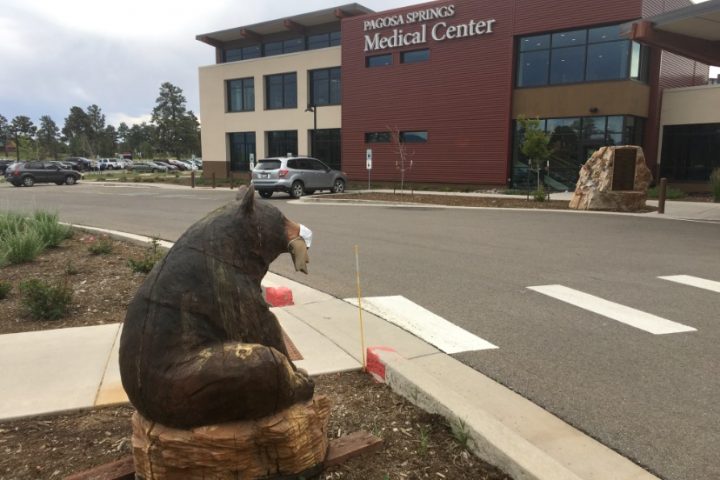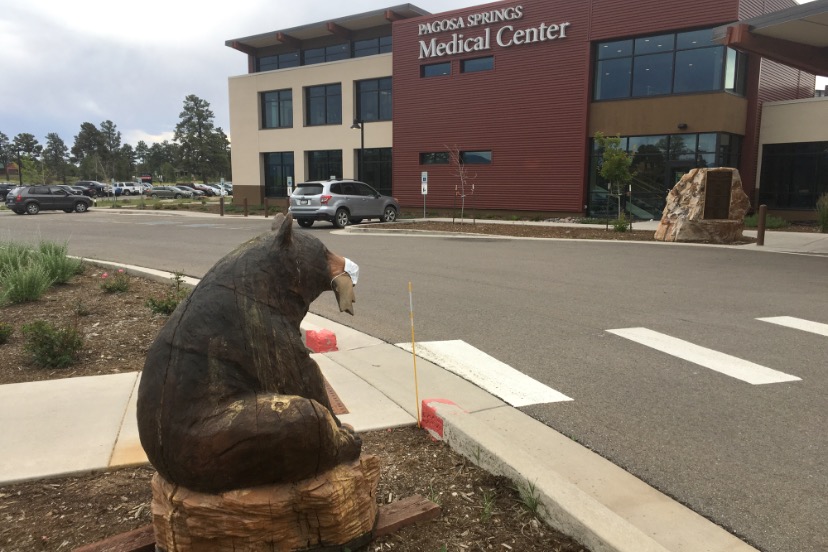Earlier this week, the New York Times published an outstanding 8-minute video produced by about a rural hospital in Sweetwater, a rural Texas community about the size of Pagosa Springs/Archuleta County. You can view the video here.
The video bears this headline:
In Texas, 6 critically ill patients would overwhelm this hospital.
Although confirmed COVID cases have been increasing in Texas over the past couple of weeks, much of the increase is taking place in urban areas — especially Houston, San Antonio, and Austin. Dr. Peter Hotez, one of the scientists working to develop a COVID-19 vaccine, has described the situation unfolding in Texas is a “humanitarian catastrophe,” and labeled the country’ response to the pandemic as “one of the biggest public health failings in the history of the US.”
But that’s mostly news from the big cities. We don’t often get news about rural hospitals, and their struggle to cope with this pandemic.

To get a better sense of our local, relatively rural, situation, I sat down yesterday with Dr. Rhonda Webb, CEO of the Pagosa Springs Medical Center. According to the PSMC website, Dr. Webb served at the hospital’s Chief Medical Officer prior to becoming the CEO. “Her focus and commitment are to provide quality, compassionate care for all community members, surrounding communities, and those who visit our majestic area.”
We began the conversation with the basic question:
What would it take to overwhelm PSMC with critical COVID cases?
Dr. Webb began her explanation by giving a brief history of the changes PSMC began making in their operations, dating back to the end of February when it became apparent that the pandemic had made its way to US shores, and that at least some hospitals might eventually become overwhelmed. PSMC created plans to address four levels of public health threat: Green, Yellow, Red and Black.
“We were already, on March 12, in our Yellow surge, because of lack of PPE at that point. Small hospitals can’t afford to keep… nor do we have the space…to keep supplies.”
San Juan Basin Public Health reported the first confirmed case of COVID-19 on March 26, and the total count eventually reached eight cases, where it remained throughout April and May. No deaths related to the virus have been reported in Archuleta County. But even without an outbreak in the community, the shortage of Personal Protective Equipment at PSMC made the situation serious from an operational standpoint.
“Now, we have lowered ourselves to ‘Green’ because we’ve managed, through all this, to get our PPE up, to where we wouldn’t run out.”
Dr. Webb walked over to a large whiteboard covered with text.
“This is what we would do if we got a surge of COVID-19 patients.
“We are an 11-bed Critical Access Hospital. We have zero ICU beds.
“We would prefer not to have patients in an ICU bed at Pagosa Springs Medical Center. But if we had nowhere to transfer patients, we would have the ability to ‘surge up’ and create an ICU room that could accommodate two patients. But no hospital like us wants to do that, right? It’s better if we can transfer patients to a facility that does Intensive Care, that is staffed for Intensive Care, that has the equipment that we don’t have here, and can’t have here.”

When the Upper San Juan Health Service District began the process of converting its small clinic — the Dr. Mary Fisher Clinic — into an actual hospital capable of housing patients overnight, the operational model they chose was the Critical Access Hospital. This federal designation was created by the Centers for Medicare and Medicaid Services (CMS) in 1997 to address an epidemic of hospital closures in rural communities.
One of the primary benefits of operating as a Critical Access Hospital is enhanced Medicare disbursements. In many situations, Medicare payments do not fully cover the cost of providing medical treatments, but Critical Access Hospitals are guaranteed 100 percent of their costs for delivering service to Medicare patients. The disbursements for Medicaid, however, are somewhat less.
Hospitals must meet the following conditions to obtain a Critical Access Hospital designation:
- Have 25 or fewer acute care inpatient beds
- Be located more than 35 miles from another hospital
- Maintain an annual average length of stay of 96 hours or less for acute care patients
- Provide 24/7 emergency care services
According to these CMS requirements, it would appear that PSMC was never intended to provide acute care for a patient for more than 96 hours.
In the case of acute care for COVID-19 patients, one of the key limitations at PSMC is an inability to consistently provide oxygen to ventilators.
“Our oxygen is brought in; we have portable tanks. Getting those refilled — if we had patients on ventilators — would be a problem for us. We’ve been able to increase our supply of oxygen, through all this, but… it’s not that…
Dr. Webb took a breath.
“I get sort of passionate about all this. I’ve been sort of ‘living COVID’ now, since the end of February, and…
“I am very proud of our hospital, and our medical staff and our nursing staff, everyone here… front line people, back line people…
“We provide excellent care, but we’re not used to keeping critical patients here, past the Emergency Room visit. We send the critically ill patients somewhere else. That’s what we want to do. If we had nowhere to send people, which is the worst thing that could happen, right? So right now, I think in Houston, their beds are at capacity in their ICUs. If you were a small hospital that would typically refer in to their ICU, you can’t do it.
“So that’s what we don’t want to see happen. We meet weekly with the folks at Mercy [in Durango] and they have mapped out where they are with their ventilator usage and all that. As Colorado shut this down, the cases in Denver and Colorado Springs declined pretty quickly. So they were never at 100 percent capacity. They were seeing a lot of COVID patients, but now they’re not see so many, anymore.”
But of course, a rural hospital cannot easily survive financially, if all they are doing is sending patients to larger hospitals.
How is PSMC surviving, financially?

